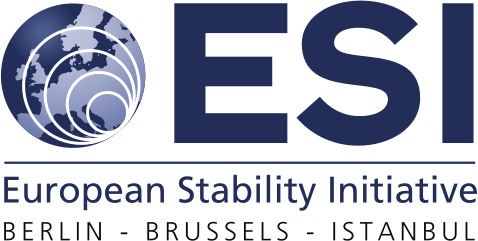The Malta Plan – a humane EU border and asylum policy is possible
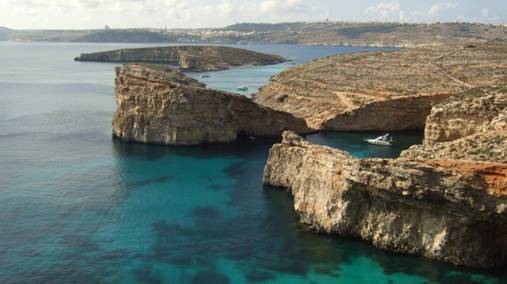
- Malta Plan outline
- Aegean lessons for the Malta Plan
- An Athens-Rome initiative to save the EU
- Why the Nauru model is a fantasy
- Take-Back Agreements in Africa
- The key – fast quality asylum procedures
- Instead of Dublin, Valetta
- Refugee rights and the EU in the era of Trump
Dear friends,
As European leaders meet in Malta today, one thing is obvious: the European Union urgently needs a credible policy on asylum and border management. It must combine effective control of external land and sea borders with respect for existing international and EU refugee law.
Such a policy must deter irregular migration. At the same time it must treat asylum seekers respectfully. It must respect the fundamental ethical norm of the rule of rescue, not to push individuals in need into danger, which is at the heart of the UN Refugee Convention (and its key article 33 on no push-backs or non-refoulement).
The current EU presidency (Malta), supported by the countries which suffer most from the status quo (Greece and Italy) as well as countries where broad publics still support the goal of a humane asylum policy (such as Germany and Sweden) should build consensus for a concrete proposal before the summer. This should replace the current Dublin procedures whose reform is currently debated in the EU with little realistic prospect for a successful outcome. What the EU needs instead is a Malta Plan for the Mediterranean: effective, humane, and politically viable:
Malta Plan outline
EU Asylum Missions invited by Greece and Italy
Quality asylum decisions by these missions within four weeks
Direct relocation of recognized refugees by these missions
Readmission from Italy based on take-back agreements with countries of origin
Action plan for Turkey to become a credible Safe Third Country
EU commitment to resettlement with UNHCR/bilaterally
Valletta mechanism to replace Dublin regulation
EU target: Mediterranean irregular arrivals below 100,000 a year
EU commitment to principles: no push-backs, no Nauru, no fortress EU
Aegean lessons for the Malta Plan
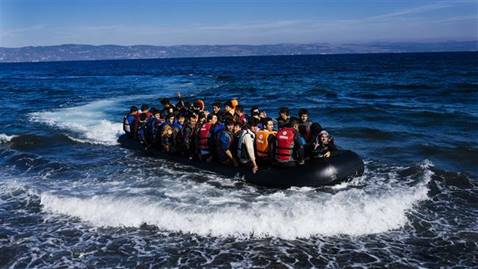
Ten months ago, the EU-Turkey agreement (Aegean agreement) laid the basis for diffusing the refugee crisis. It urgently needs to be implemented fully – and its lessons need to be applied to African migrants arriving by sea in Italy.
The Aegean agreement is based on existing EU laws on asylum and on the principles of the UN Refugee Convention. It commits the EU to help improve conditions for refugees in Turkey with the most generous contribution the EU has ever made for refugees in any country in the world. It makes improving the work and quality of the Turkish asylum service a matter of direct interest to the EU: only if Turkey has a functioning asylum system can it be considered a safe third country. It also foresees substantial resettlement of refugees in an orderly manner from Turkey.
In the past ten months the implementation of this agreement has been deeply disappointing. Conditions on the Greek Aegean islands where asylum seekers have landed are shameful for the EU. No serious effort has been made to address legitimate questions whether and how Turkey can demonstrate that it is truly a safe third country for those who might be returned there from the Greek islands. The Greek asylum service has been overwhelmed by the challenges it faces, both on the mainland and in the Aegean, deciding fewer than 1,000 asylum claims per month. EU support efforts in Greece have been managed badly, with every announcement contradicted by reality. And instead of sending a signal that rhetoric about alternative, safe and legal ways to the EU for Syrian refugees is serious, less than 3,000 refugees have been resettled from Turkey to EU member states since April 2016.
For more:
On solid ground? Twelve facts about the EU-Turkey Agreement (25 January 2017)
And yet, the fact that the Aegean agreement has been implemented badly does not make it any less important. In the time since the pact was reached some ten months ago, it has had a dramatic and immediate impact on refugee movements in the Eastern Mediterranean. Crossings in the Aegean Sea fell from 115,000 in the first two months of the year 2016 to 3,300 in June and July. The number of people who drowned in the Aegean fell from 366 people in the first three months of the year to seven between May and July 2016. This was achieved without pushing refugees to other, more dangerous routes (the people arriving in Southern Italy in 2016 were from African countries). And there have not been any mass expulsions from Greece either, something NGOs had feared would happen. In fact, more people had been sent back from Greece to Turkey in the three months preceding the agreement (967) than in the ten months since it was concluded (801).
This stands in stark contrast to the situation off the coast of North Africa. Here it is obvious that the EU has no credible strategy. The status quo is unacceptable from a humanitarian point of view: in 2016 an unprecedented number of people (some 4,500) drowned in the Central Mediterranean. The situation is also politically explosive, lending ammunition to the far-right across Europe (from Geert Wilders in the Netherlands to Marine Le Pen in France and the Alternative für Deutschland in Germany). They argue that the only way to control migration is by abolishing the Schengen open borders regime and restoring border controls within the European Union. The lack of a coherent EU strategy has led some to suggest looking to Australia for inspiration, praising a model whereby anyone reaching the EU by sea should be denied the right to even apply for asylum in the EU and be returned to North Africa.
However, a humane and effective border and asylum policy is possible, and it does not involve emulating the Australian model. The first step requires implementing the EU-Turkey agreement in full. The second step involves applying the right lessons to the Central Mediterranean. Both steps would require the EU to set up new structures, including credible EU asylum missions, that decide claims on the spot, and instruments to resettle refugees, among others. Importantly, such a policy can be defended in upcoming elections. Without the backing of democratic majorities even the best design for a humane border and asylum policy does not matter.
An Athens-Rome initiative to save the EU


Greece and Italy should call on the EU to send European asylum missions that should be able to take binding decisions on asylum claims. This would require provisions that any decision taken by such missions could be suspended by a chief Greek or Italian legal officer – a sovereignty clause.
All those who are given protection should then be relocated across the EU, without delay. At the same time reception conditions on the Greek islands need to be urgently improved.
For this to work Turkey would also need to present a concrete proposal on how to ensure that it is fulfilling the conditions set by EU law to be a credible safe third country for refugees of any origin, whether they are Pakistani, Afghan or Syrian. It would need to guarantee – with more assistance from the EU and UNCHR, if need be – that there are sufficient asylum case workers, translators and legal aid in place to provide an efficient asylum process. There would need to be full transparency surrounding what is happening to each and every person returned.
Why the Nauru model is a fantasy
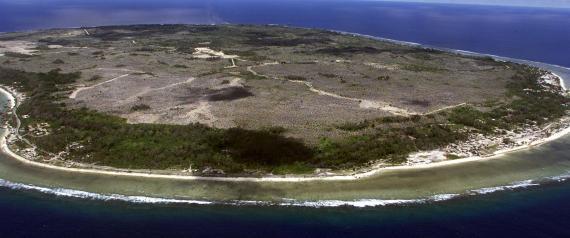
The Australian government puts everyone who arrives via the sea in camps on the Pacific island of Nauru or on Manus Island in Papua New Guinea. Asylum seekers held in Nauru in recent years have been forced to wait many years for their applications to be decided. Conditions of detention are intentionally harsh to deter further arrivals. And once asylum is granted, it remains unclear where refugees might go.
It is important to underline that taken together Nauru and Manus island have never hosted more than 2,500 people at any given time, under inhumane conditions, and with no clear sense of what should happen to those whose asylum claims are eventually recognized as valid after many years of unnecessary delay. The notion that the EU might outsource the detention of tens of thousands of asylum seekers to camps across North Africa for long periods and under similar conditions is a recipe for failure, logistically impossible and deeply inhumane.
Take-Back Agreements in Africa
So how can the EU reduce the number of arrivals - and deaths - in the Central Mediterranean? The key lies in quickly processing asylum applications of anyone who arrives, and in quickly returning those whose claims are rejected to their countries of origin. Both of these tasks should become European responsibilities. African countries are understandably suspicious of readmission agreements under which they would have to take back an unlimited number of their citizens who arrived in the EU in the past. Those who are granted asylum should be quickly relocated to other EU countries.
Arrivals from Nigeria to Italy 2014-2016
|
2014 |
2015 |
2016 |
|
|
Arrivals |
9,000 |
22,237 |
37,551 |
|
Positive first instance asylum decisions |
2,145 |
3,740 |
3,220 (Jan-Sept) |
What would be the impact of such a policy on arrivals? It is very likely that these would fall sharply.
Nigerians were the largest group of arrivals in Italy in 2016, and the majority would be unlikely to risk their lives crossing the deadly Sahara, unstable Libya and the Central Mediterranean and spending thousands of Euros on smugglers when the probability of being returned to Nigeria within four weeks of arival in Italy is almost 70 percent.
Ensuring that Nigeria, Senegal and other countries after an agreed date take back their nationals who do not qualify for protection should be the chief priority in talks between the EU and African countries of origin – similar to the commitment Turkey made to take back without delay people who arrive in Greece after 20 March 2016. There is a need for specific "take back" agreements between the EU and African countries of origin which focus only on those who arrive in Italy after these agreements enter into force. Thereby this would have no impact on current remittance flows. In return the EU should offer these countries concrete benefits, from scholarships to visa facilitation and schemes for regular work migration.
Top 10 nationalities of arrivals in Italy 2016, recognition rates 2015
|
Italy arrivals |
EU Recognition rate |
|||
|
Nigeria |
37,551 |
21% |
24% |
|
|
Eritrea |
20,718 |
11% |
90% |
|
|
Guinea |
13,345 |
7% |
37% |
|
|
Ivory Coast |
12,396 |
7% |
32% |
|
|
Gambia |
11,929 |
7% |
34% |
|
|
Senegal |
10,327 |
6% |
28% |
|
|
Mali |
10,010 |
6% |
29% |
|
|
Sudan |
9,327 |
5% |
56% |
|
|
Bangladesh |
8,131 |
4% |
15% |
|
|
Somalia |
7,281 |
4% |
63% |
|
|
All arrivals |
181,436 |
|||
The key – fast quality asylum procedures
All this would require that there is an EU asylum mission in Italy able to process all claims within weeks. Developing the ability for EU Asylum Missions to deal with claims within four weeks, while ensuring the quality of decisions through quality control mechanisms and trained staff, backed up by competent interpreters and with available legal aid, should be the top priority for the EU in the coming weeks. This is above all else a matter of resources and competent management.
This holds the key to a humane and effective EU plan for the Mediterranean. Quick decisions and rapid readmission based on EU Take-back Agreements with African countries of origin would bring down sharply the number of people who stay in the EU after their applications are rejected. In this way, the number of irregular arrivals will become manageable – with less business for smugglers and far fewer deaths at sea. The aim could be to reduce the number of all irregular arrivals by sea to below 100,000 (for an EU of over 500 million people) already in 2017. Such a goal is realistic: it is, after all, close to the average number of arrivals in the years 2009-2014!
Irregular Mediterranean crossings into Greece and Italy 2011-2016
|
|
Greece |
Italy |
Total |
|
2011 |
57,000 |
64,300 |
121,300 |
|
2012 |
37,200 |
15,200 |
52,400 |
|
2013 |
24,800 |
45,300 |
70,100 |
|
2014 |
50,800 |
170,700 |
221,500 |
|
2015 |
885,400 |
154,000 |
1,039,400 |
|
2016 |
182,500 |
181,100 |
363,600 |
ESI calculations based on Frontex data. For the data on detections of illegal crossings of EU borders 2011-2015, see Annual Risk Analysis 2016, 5 April 2016, p. 17; for the year 2016, see Frontex Migratory Routes Map, accessed 30 January 2017.
Instead of Dublin, Valetta
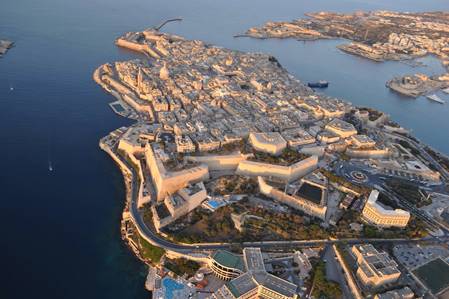
Almost all irregular arrivals to the EU at this moment reach the EU through Greece and Italy. EU asylum missions there would dramatically reduce the pressure on all other European asylum services. If such a plan would be implemented there would also be no need for the doomed Dublin reform debates currently taking place in Brussels. A Valetta mechanism – based on EU asylum missions in border states, reformed relocation and EU readmission from these states – should replace Dublin.
European leaders could thus demonstrate to their electorates that it is possible to control external sea borders without undermining the refugee convention. They should also simultaneously push forward the global debate on orderly transfers of refugees through resettlement. The only way to do so is to lead by example, building up EU capacity for resettlement as well boosting the UNHCR's capacity to do more. Then, coalitions of willing EU states should commit to resettle a significant number of refugees each year.
In recent decades, resettlement has never reached more than 100,000 a year in the whole world, and of these the US has taken the lion's share. With the US under Trump is unlikely to continue to play this role, the EU needs to step up its efforts. Until now European states have not built up the bureaucratic machinery for large-scale resettlement. For this reason, pushing the EU to fully implement the resettlement provisions in the Aegean agreement (point 4) is vital and deserves to be an advocacy priority for human rights NGOs and refugee rights defenders.
For more on resettlement globally and in the EU and other refugee-related issues: The refugee crisis through statistics (30 January 2017)
Refugee rights and the EU in the era of Trump

In the face of rising anti-refugee sentiment across the world, it will take a strong coalition of countries to protect the refugee convention. Such a coalition requires governments able to win elections on the platform that a humane asylum policy and effective border control can be combined and can even reinforce each other.
Such a policy would have to be based on clear core principles: no push-backs; no-Nauru; discouraging irregular passage through fast readmission and fast asylum processes; expansion of resettlement. If this happens, the lessons from the Aegean agreement – the only plan in recent years that has dramatically reduced the numbers of people arriving without changing EU refugee law – might help to develop a blueprint for protecting refugee rights in an age of anxiety. The stakes could not be higher.
Yours sincerely,

Gerald Knaus
